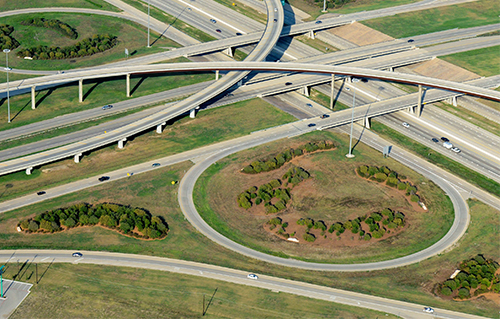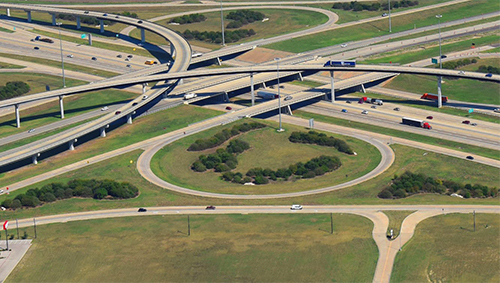Since the I-35 Reconstruction Project began more than seven years ago, Waco District Landscape Architect Betsy Pittman has so far been responsible for planting 994 acres of wildflower seed along the 96 miles of the corridor.
"When people think about the things a TxDOT landscape architect does, bluebonnets and Indian paintbrush may be the first things that come to mind," Pittman says. "Although beautification is part of my work, it certainly isn't all of it."
In fact, "enhancing the aesthetic quality of the transportation network" is only one of five of her responsibilities. The others are:

According to TxDOT's Landscape and Aesthetics Design Manual, "The landscape architect's primary role is to assist in integrating environmental and aesthetic concerns with engineering and safety requirements. In this role landscape architects contribute to a broad range of highway planning and design activities."
Plants work hard on Texas roadways, helping stabilize the soil on slopes and borrow ditches and safely channeling runoff water to planned collection areas. Root systems of grasses, flowers, shrubs and trees trap pollutants in the soil, keeping them out of the waterways. Plant leaves absorb air pollutants and carbon dioxide, releasing fresh oxygen in its place.
TxDOT's current emphasis on highway landscaping and beautification was born in the 1930s under State Highway Engineer Gibb Gilchrist. He and Highway Commissioner W. R. Ely became loud proponents of tree preservation as part of the road-building process. In 1933, Gilchrist hired the first landscape architect for the Texas Highway Department, Jac Gubbels, who helped shape a new philosophy: highways should be in harmony with the surrounding landscape, and trees and shrubs can act as visual cues to keep drivers alert.

"We became the national leader in highway landscape architecture," Pittman points out. "The Highway Department wanted the roadway to become an experience for travelers, and wanted to make it seem like the roadway was part of the natural environment. And we still do that today. Safety remains the priority."
Pittman says the vegetation she uses on her projects are either native or naturalized. Her favorite tree is the crepe myrtle because of its hardiness and ability to flower.
"Vegetation helps with erosion and pollution control and adds beauty to the roadway. The trees we plant are mainly used around overpasses and leftover areas between guardrails and retaining walls. You are beginning to see areas that we heavily plant with trees, like my project at I-35 and Loop 340."
Planting trees, shrubs, wildflowers and other vegetation will remain a priority for TxDOT landscape architects, but with the I-35 reconstruction, Pittman has taken on a new task: making the structural elements like bridges and overpasses along the corridor fit into the context of the community, thereby creating a sense of place. Those aesthetic plans were developed with the input from community members.
"We are using colored concrete on bridges and retaining walls. White cement is being used on bridge rails and barrier walls," Pittman explains. "My job is to make the area look as interesting and as unique as possible for that community."
Jake Smith
I-35 Public Information Officer
254-867-2705
Contact My35